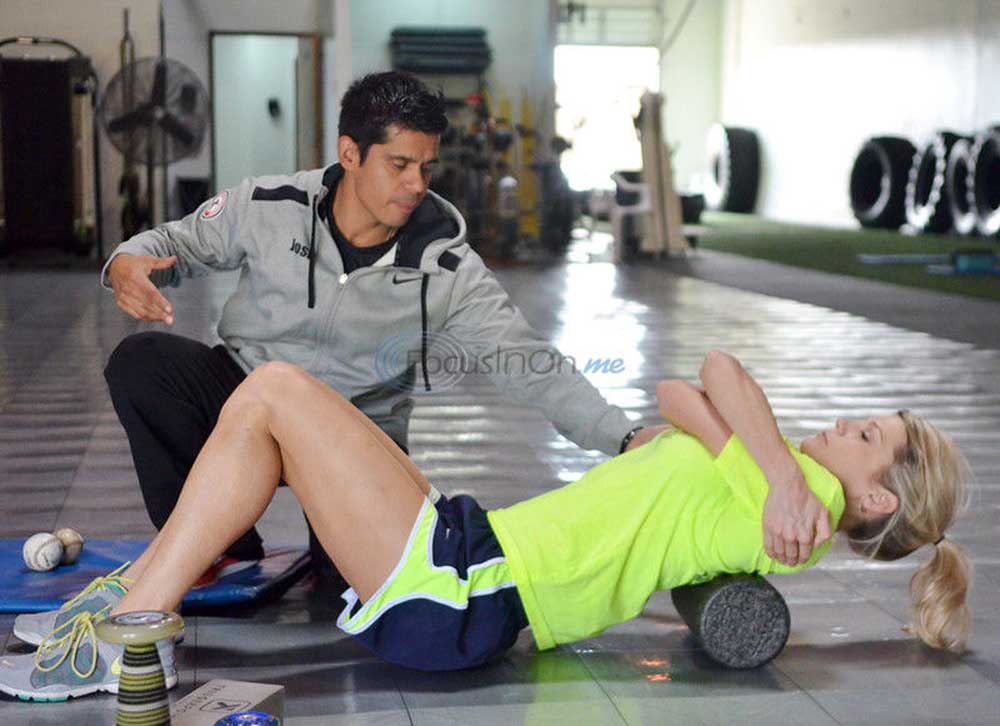VIDEO: What is that thing? Foam rolling helps relax the muscles, prepare for workouts
Published 7:12 pm Saturday, December 28, 2013

- The rollers can also be used to target back muscles and improve flexibility. (Victor Texcucano/Staff)
You may have seen some black cylinder-shaped pieces of foam at the gym and wondered what to do with it. Maybe you saw someone lie on it but still didn’t understand how you could utilize it.
It’s called self-myofascial release, or foam rolling. Whether athletes or people who are sedentary, everyone gets knots in the muscles. They can be painful, especially after an activity.
Chances are, you’ve done myofascial release before when you rubbed the bottom of your feet across a ball to relax those muscles or when you got a deep tissue massage.
“People have always done this but they paid someone to do it,” said Josh Gonzalez, general manager and co-owner of Athletic Performance of Texas. “Instead of getting a deep tissue massage, this is how you do it yourself.”
Foam rolling with a firm foam tool helps reduce soreness and tightness, improve flexibility and to prevent injury.
“On top of muscle, there is something called a fascia,” Gonzalez said. “That fascia gets stuck and adheres to the muscle then the muscle doesn’t want to move and glide underneath that fascia. So what we have to do is kind of break that fascia away from the muscle. The muscle can release and that way we can get into those deeper layers where those knots are.”
Foam rolling is a technique Gonzalez and co-owner Brian Runnels have used in their Tyler and Longview gyms for the last four years. It’s also gained in popularity across the country over that time.
There is a particular way to foam roll. Gonzalez said a big mistake people make is that they get onto the foam and roll it like a rolling pin.
First, a person starts with an assessment to see where there are tight muscles and which ones aren’t working correctly. The individual slowly rolls over the target area, holding where there is some pain for at least 30 seconds.
“You want to feel the pain,” Gonzalez said.
Once the muscles have loosened up, it’s then time to move on to stretching, then whatever physical activity is planned.
“Before we want you to start moving — squatting, running, jumping — we want those muscles to move like they’re suppose to,” Gonzalez said.
Some athletic trainers use foam rollers before an activity, while others use it afterward. At APT, they always do it before they even begin stretching.
“If you’re going to come in and work out with us, it’s a required thing,” Runnels said.
The trainers said foam rolling is good for children as young as 5.
“A lot of schools are bringing it in,” Runnels said. “Quite a few of the ones I’ve trained over here — even my young soccer players — have actually got to where they have enjoyed it so much they’ve carried it to the field with them. They can feel the difference it makes, so even before they go into to play their games, they’re foam rolling on the side before they even step into the game.”
It’s also for people who don’t work out regularly. Gonzalez said it could be a valuable tool for people who sit at an office job all day.
He said many times, office workers may complain of sciatica, or pain caused by nerve irritation.
“A lot of times, that’s not true sciatica,” he said. “A lot of times you have a muscle in there that’s impinging on that nerve that causes pain, that’s radiating down the leg.”
As a master athletic trainer for the National Academy of Sports Medicine, Gonzalez shows people how to integrate it into their programs at gyms.
“Generally, almost everybody can do it,” Gonzalez said. “It’s just taking the time to learn.”
DIY FOAM ROLLING
Get an assessment. If unable to get an assessment from a trainer, work the areas you will be using in a workout.
To use a foam roller, start rolling on the target area. When there is a slight pain, stay on that area for at least 30 seconds.
The main areas to work are the calves, glutes (buttocks), the TFL and IT band (pelvic area and tendon), inner thighs, and lats and pecs, which are muscles in the back and chest.
For more information about foam rolling, visit the National Academy of Sports Medicine website at bit.ly/1c8rwC3.
See Josh Gonzalez and Brian Runnels demonstrate foam rolling at TylerPaper.com.






